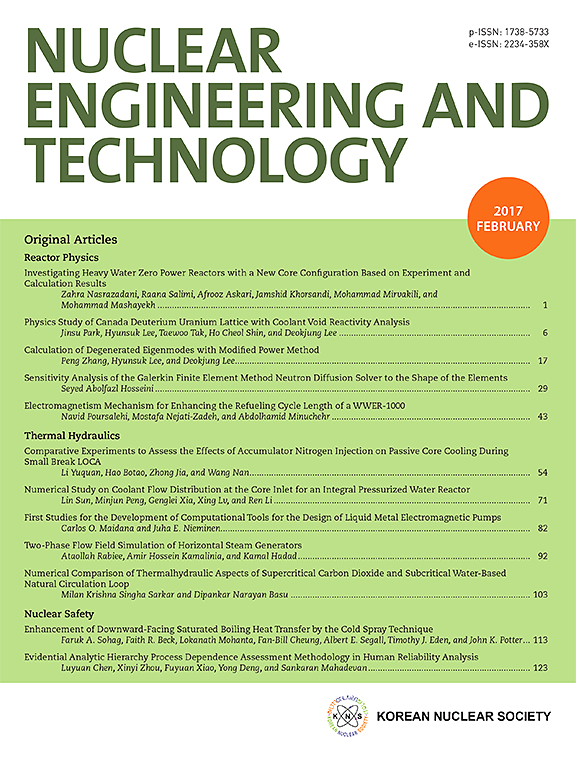Concept of understandable diagnostic cause visualization with explainable AI and multilevel flow modeling
IF 2.6
3区 工程技术
Q1 NUCLEAR SCIENCE & TECHNOLOGY
引用次数: 0
Abstract
In nuclear power plants, operators can face cognitive workloads when diagnosing abnormal events due to the need to monitor numerous parameters and consider hundreds of potential scenarios. Artificial intelligence technologies have been proposed to support this process by providing diagnostic results; however, their lack of transparency can lead to out-of-the-loop unfamiliarity and distrust, hindering effective decision-making. To address these challenges, this study introduces a novel concept to enhance the understandability and trustworthiness of diagnostic support systems through Explainable Artificial Intelligence (XAI). The first method in the proposed concept rearranges monitoring parameters based on system structures to reflect parameter relationships. The second method refines explanations from XAI using Multilevel Flow Modeling (MFM) to ensure consistency with physical flow, and it visualizes diagnostic cause components on a plant map. By filtering out incomprehensible information and visualizing intuitive diagnostic causes, the system enables operators to identify expected causes of diagnostic results directly on the NPP map at the component or system level. This approach provides explainable and comprehensible support information, fostering trust in the system and improving diagnostic efficiency in abnormal situations.
可理解的诊断原因可视化概念,可解释的人工智能和多层次流建模
在核电站中,由于需要监测大量参数并考虑数百种潜在情况,操作员在诊断异常事件时可能面临认知工作量。人工智能技术已被提议通过提供诊断结果来支持这一过程;然而,它们缺乏透明度可能导致不熟悉和不信任,阻碍有效的决策。为了解决这些挑战,本研究引入了一个新的概念,通过可解释人工智能(XAI)来提高诊断支持系统的可理解性和可信度。提出的概念中的第一种方法是根据系统结构重新排列监测参数,以反映参数关系。第二种方法使用多级流建模(MFM)对XAI的解释进行细化,以确保与物理流的一致性,并在工厂图上可视化诊断原因组件。通过过滤掉难以理解的信息和可视化直观的诊断原因,该系统使操作人员能够直接在组件或系统级别的NPP地图上识别诊断结果的预期原因。这种方法提供了可解释和可理解的支持信息,促进了对系统的信任,提高了异常情况下的诊断效率。
本文章由计算机程序翻译,如有差异,请以英文原文为准。
求助全文
约1分钟内获得全文
求助全文
来源期刊

Nuclear Engineering and Technology
工程技术-核科学技术
CiteScore
4.80
自引率
7.40%
发文量
431
审稿时长
3.5 months
期刊介绍:
Nuclear Engineering and Technology (NET), an international journal of the Korean Nuclear Society (KNS), publishes peer-reviewed papers on original research, ideas and developments in all areas of the field of nuclear science and technology. NET bimonthly publishes original articles, reviews, and technical notes. The journal is listed in the Science Citation Index Expanded (SCIE) of Thomson Reuters.
NET covers all fields for peaceful utilization of nuclear energy and radiation as follows:
1) Reactor Physics
2) Thermal Hydraulics
3) Nuclear Safety
4) Nuclear I&C
5) Nuclear Physics, Fusion, and Laser Technology
6) Nuclear Fuel Cycle and Radioactive Waste Management
7) Nuclear Fuel and Reactor Materials
8) Radiation Application
9) Radiation Protection
10) Nuclear Structural Analysis and Plant Management & Maintenance
11) Nuclear Policy, Economics, and Human Resource Development
 求助内容:
求助内容: 应助结果提醒方式:
应助结果提醒方式:


